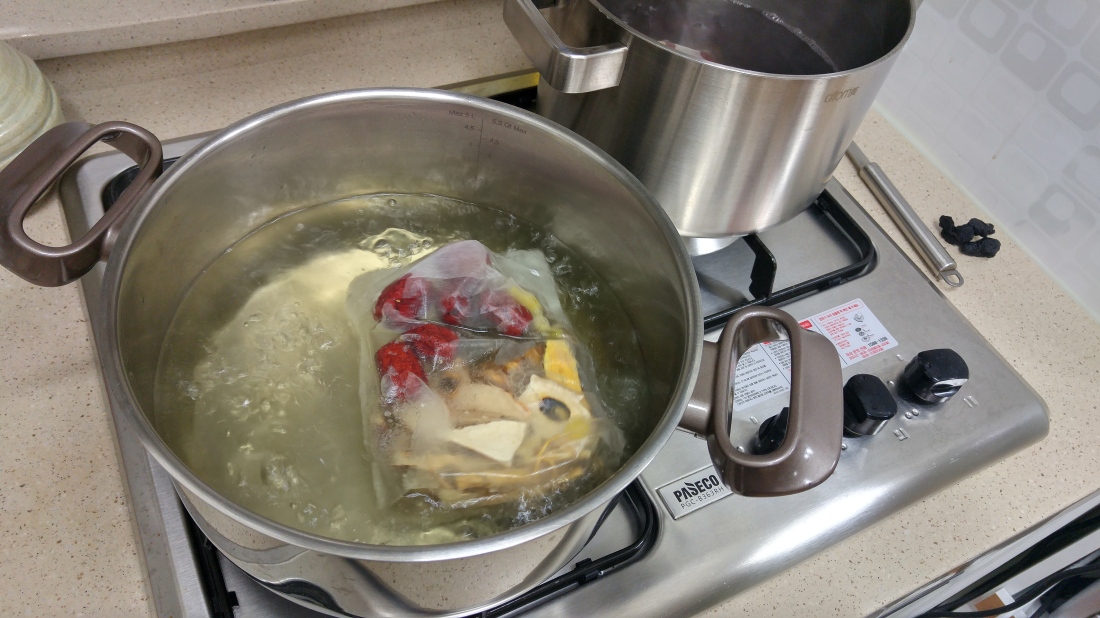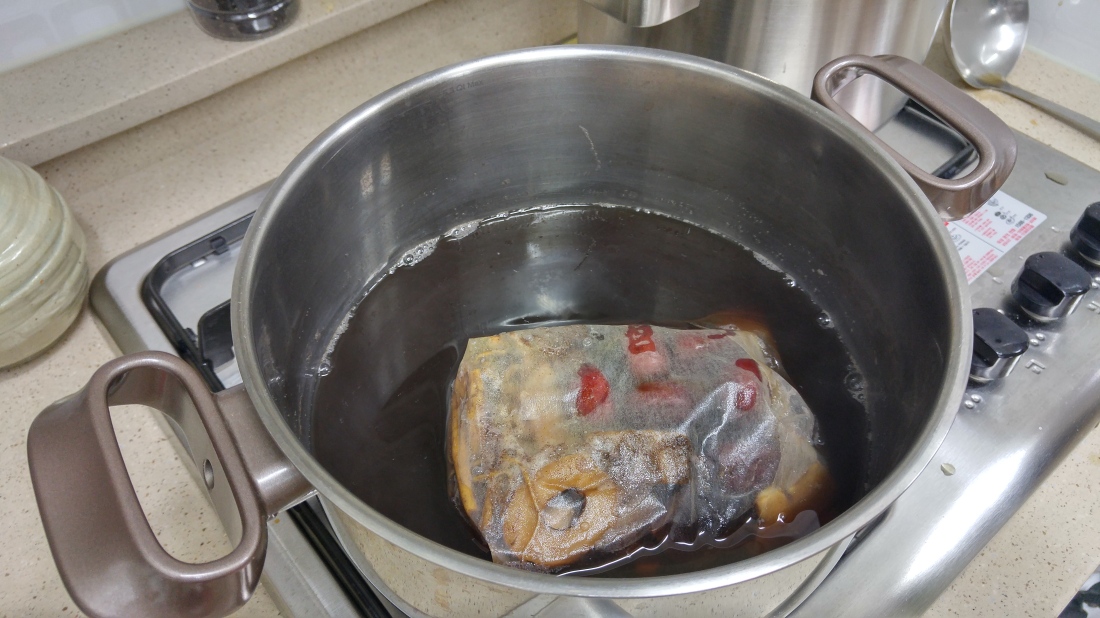South Korea has a great deal to offer in the way of herbal medicine. Here, you can find Korean traditional medicine hospitals (한의원) as easily as you could find any western clinic. You don’t have to go to a hospital to try Korean medicines though, instead, you can stop by your local convenience store and try some ssanghwatang (쌍화탕). To be honest, most people don’t like it’s flavor; Korean medicine is known for being bitter, even with added sweeteners. I don’t favor the convenience store fare, but if you go to some cafes (such as those in insadong), you can find a nicer version of ssanghwatang. I liked this more authentic version so much that I decided to enlist my wife to help me track down a recipe.
The first difficulty was that the herbs required were entirely foreign to me, and not just because they were written in Korean. Mia gave me a list of herbs and roots and sent me down to the traditional market in town. I went to the herb shop that I usually go to buy ginseng and asked him to fill the list. Here is what I bought for making ssanghwatang:
- 황기 Hwanggi
- 당귀 Danggui
- 감초 Gamcho
- 백작약 Baekjakyak
- 칡 Chilk
- 천궁 Cheongung
- 숙지황 Sukjihwang
- 계피 Gyaepi (cinnamon)
- 대추 Daechu (jujube)
- 생강 Saenggang (ginger)
For about 100 grams of each, the total came to 16,000 won (about $15 USD).
The recipe that my lovely wife found was approximately the following:
- 황기 Hwanggi (12g)
- 당귀 Danggui (12g)
- 감초 Gamcho (9g)
- 백작약 Baekjakyak (30g)
- 칡 Chilk (one piece)
- 천궁 Cheongung (12g)
- 숙지황 Sukjihwang (12g)
- 계피 Gyaepi (cinnamon) (12g)
- 대추 Daechu (jujube) (six pieces)
- 생강 Saenggang (ginger) (20g)
- Measure all ingredients and add to a boiling bag (except Sukjihwang).
- Add bag to boiling water for 30-60 seconds (for cleaning).
- Remove bag and dispose of water.
- Add 3 liters of water and the bag to the pot.
- Cook on high until boiling.
- Once boiling, reduce heat to half. (Should be just barely bubbling).
- Reduce to half of original volume (to 1.5 liters).
- Drink immediately or store in the refrigerator (once it cools).
So, if that wasn’t clear enough, let’s look at some pictures!




I really hope that this entry has been helpful, or at the very least, interesting. Another time I will write about how to make a different tea called Shipjeondaebotang (십전대보탕) as well as how to make that candied ginger. Happy boiling!











Very interesting. Do any of these herbs have equivalent/comparable cousins in the US? What does this concoction help with?